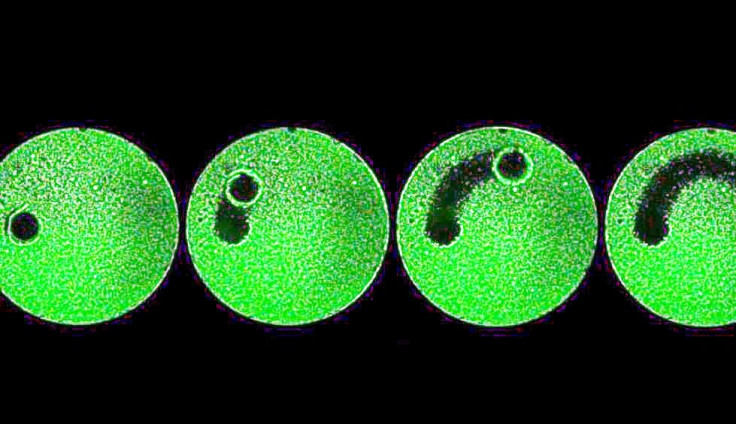Dental Care Breakthrough: Tiny Robots Designed To Eliminate Dental Plaque

A team of dentists, biologists and engineers from the University of Pennsylvania have developed micro-robots that can break apart and remove dental plaque, otherwise called "dental biofilm."
These micro-robot swarms can also be put to other uses such as keeping catheters and water pipes clean and free of debris.
The UPenn team developed two types of robotic systems — one designed to work on surfaces and the other to operate inside confined spaces. They showed that robots with catalytic activity could ably destroy biofilms, which are sticky amalgamations of bacteria enmeshed in a protective scaffolding.
Biofilms can arise on biological surfaces, such as on a tooth or in a joint or on objects, like water pipes, implants or catheters. Biofilms are notoriously difficult to remove, as the sticky matrix that holds the bacteria provides protection from antimicrobial agents.
"This was a truly synergistic and multidisciplinary interaction," Hyun “Michel” Koo of the School of Dental Medicine and the study’s co-author. The study was published in Science Robotics.
Edward Steager of the School of Engineering and Applied Science said the team leveraged the expertise of microbiologists and clinician-scientists, as well as engineers to design the best microbial eradication system possible.
"This is important to other biomedical fields facing drug-resistant biofilms as we approach a post-antibiotic era," Steager said.
"Treating biofilms that occur on teeth requires a great deal of manual labor, both on the part of the consumer and the professional. We hope to improve treatment options as well as reduce the difficulty of care."
Steager added the motion of the micro-robot can be informed by images of the biofilm gathered from microcameras or other modes of medical imaging.

Researchers are receiving support to further develop their discovery from the Penn Center for Health, Devices and Technology, an initiative supported by Penn's Perelman School of Medicine, Penn Engineering and the Office of the Vice Provost for Research.
In a previous work, Koo and colleagues made headway at breaking down the biofilm matrix with a variety of outside-the-box methods. One strategy was to employ iron oxide-containing nanoparticles that work catalytically. These particles activated hydrogen peroxide to release free radicals that kill bacteria and destroy biofilms in a targeted fashion.
Published by Medicaldaily.com



























